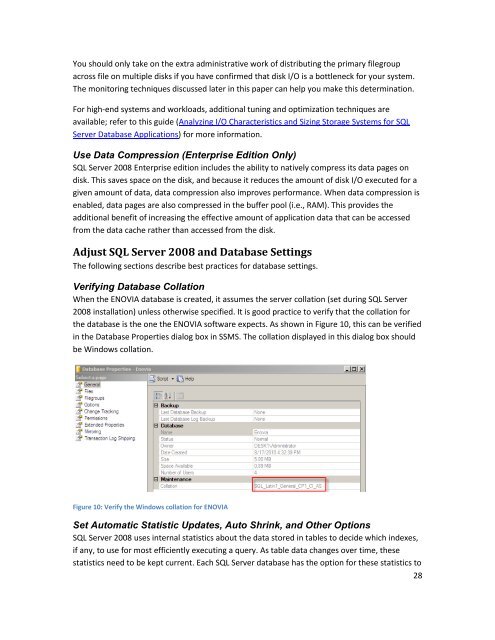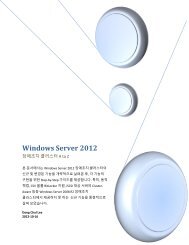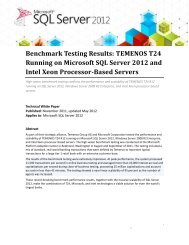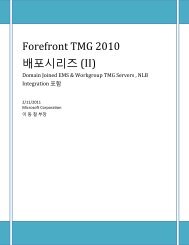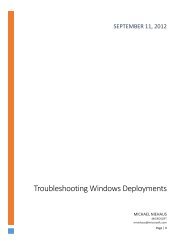Best Practices for Running Dassault Systèmes ENOVIA ... - Microsoft
Best Practices for Running Dassault Systèmes ENOVIA ... - Microsoft
Best Practices for Running Dassault Systèmes ENOVIA ... - Microsoft
Create successful ePaper yourself
Turn your PDF publications into a flip-book with our unique Google optimized e-Paper software.
You should only take on the extra administrative work of distributing the primary filegroupacross file on multiple disks if you have confirmed that disk I/O is a bottleneck <strong>for</strong> your system.The monitoring techniques discussed later in this paper can help you make this determination.For high-end systems and workloads, additional tuning and optimization techniques areavailable; refer to this guide (Analyzing I/O Characteristics and Sizing Storage Systems <strong>for</strong> SQLServer Database Applications) <strong>for</strong> more in<strong>for</strong>mation.Use Data Compression (Enterprise Edition Only)SQL Server 2008 Enterprise edition includes the ability to natively compress its data pages ondisk. This saves space on the disk, and because it reduces the amount of disk I/O executed <strong>for</strong> agiven amount of data, data compression also improves per<strong>for</strong>mance. When data compression isenabled, data pages are also compressed in the buffer pool (i.e., RAM). This provides theadditional benefit of increasing the effective amount of application data that can be accessedfrom the data cache rather than accessed from the disk.Adjust SQL Server 2008 and Database SettingsThe following sections describe best practices <strong>for</strong> database settings.Verifying Database CollationWhen the <strong>ENOVIA</strong> database is created, it assumes the server collation (set during SQL Server2008 installation) unless otherwise specified. It is good practice to verify that the collation <strong>for</strong>the database is the one the <strong>ENOVIA</strong> software expects. As shown in Figure 10, this can be verifiedin the Database Properties dialog box in SSMS. The collation displayed in this dialog box shouldbe Windows collation.Figure 10: Verify the Windows collation <strong>for</strong> <strong>ENOVIA</strong>Set Automatic Statistic Updates, Auto Shrink, and Other OptionsSQL Server 2008 uses internal statistics about the data stored in tables to decide which indexes,if any, to use <strong>for</strong> most efficiently executing a query. As table data changes over time, thesestatistics need to be kept current. Each SQL Server database has the option <strong>for</strong> these statistics to28


